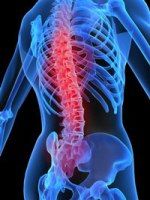Pro Bono Bio Launches Flexiseq: A Novel Approach to the Treatment of Osteoarthritis
Advertisement
Pro Bono Bio announced the launch of Flexiseq™, a approach to the treatment of osteoarthritis in the UK. Pro Bono Bio plans to launch FlexiseqTM in Germany in October and other European markets will be phased in over the next two years.
Extensive clinical trials have shown that FlexiseqTM is clinically effective in treating OA pain, and a European Phase III trial completed in 2009 involving 698 patients in the three arms (FlexiseqTM, celecoxib and the placebo) showed that FlexiseqTM is as effective as the leading prescribed COX-2 product for patients suffering pain caused by osteoarthritis. This study and others have also shown that FlexiseqTM is generally safe and well tolerated.
Clinical trials in over 1,000 patients have shown that FlexiseqTM is both efficacious and well tolerated. The only side effects attributed to the product have been transient, localised skin irritations experienced by a small proportion of the patients. Flexiseq™ has also been used alongside oral NSAIDS without adding to their side effects. These promising results have been demonstrated for treatment periods of up to a year.
FlexiseqTM is available as a gel that contains absorbing microstructures, called Sequessomes, which are able to cross the skin and reach the site of pain. Sequessomes physically absorb (sequester) and remove chemicals that are a key component in the pain and inflammation cascade. FlexiseqTM provides a localised, soothing effect on joint pain.
Flexiseq’s novel mode of action allows it to be used either alone or in conjunction with the patient’s existing osteoarthritis treatment regime. FlexiseqTM has no known interactions with other medicines, so patients who are taking other therapies can achieve pain relief with FlexiseqTM without stopping their other treatments, including NSAIDS.




















































